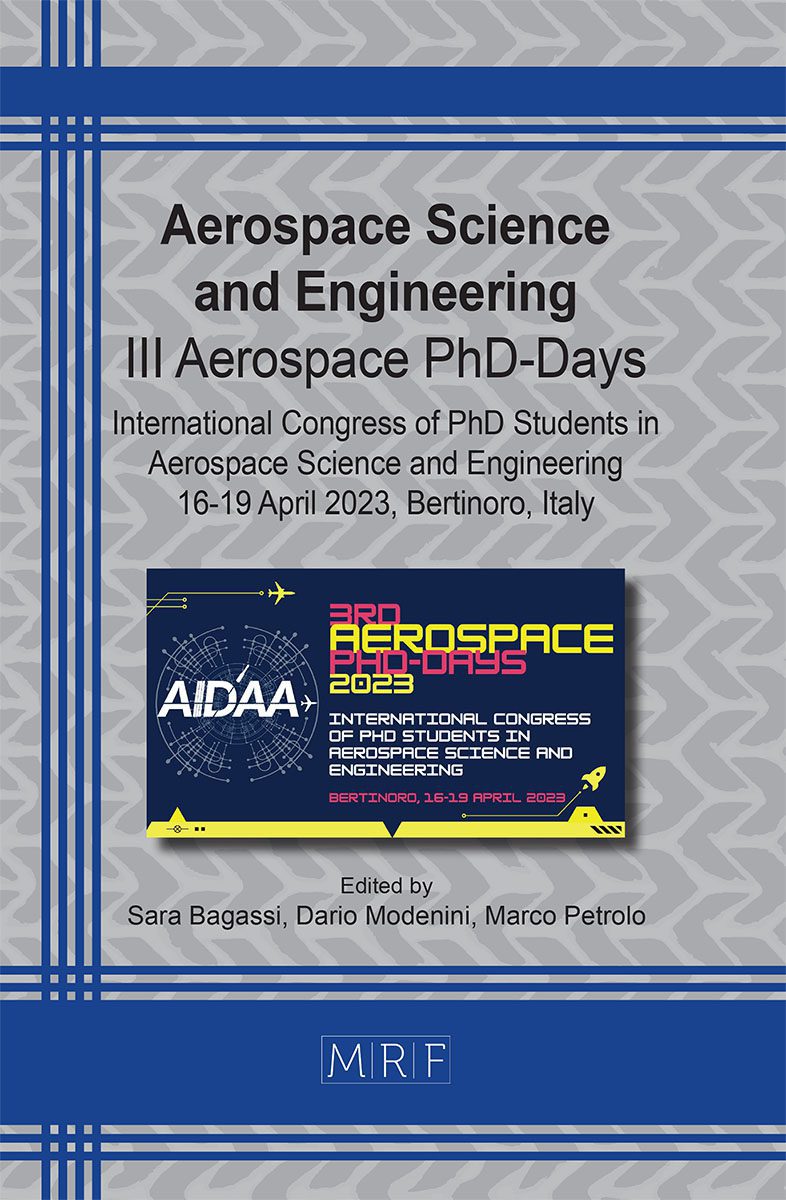High-fidelity simulation of a supersonic parachute for Mars descent
L. Placco, F. Dalla Barba, F. Picano
download PDFAbstract. The project aims to characterize the unsteady dynamics of the parachute-capsule in a supersonic flow during the descent phase on planetary entry. Presently, Large-Eddy Simulation in combination with an Immersed-Boundary Method is employed to analyze the time-evolving flow of a rigid supersonic parachute trailing behind a reentry capsule during the descent phase through Mars atmosphere. The flow is simulated at Ma = 2 and Re = 106. A massive GPU parallelization is employed to allow a very high fidelity solution of the multiscale turbulent structures present in the flow that characterize its dynamics. We show how the interaction of wake turbulent structures with the bow shock produced by the supersonic decelerator induces strong unsteady dynamics. This unsteady phenomenon called ‘breathing instability’ is strictly related to the ingestion of turbulence by the parachute’s canopy and is responsible of drag variations and structure oscillations observed during previous missions and experimental campaigns. The next steps will take into account the flexibility of the parachute.
Keywords
Supersonic Parachute, Supersonic Flows, Large Eddy Simulation, Fluid-Structure Interaction
Published online 9/1/2023, 6 pages
Copyright © 2023 by the author(s)
Published under license by Materials Research Forum LLC., Millersville PA, USA
Citation: L. Placco, F. Dalla Barba, F. Picano, High-fidelity simulation of a supersonic parachute for Mars descent, Materials Research Proceedings, Vol. 33, pp 134-139, 2023
DOI: https://doi.org/10.21741/9781644902677-20
The article was published as article 20 of the book Aerospace Science and Engineering
![]() Content from this work may be used under the terms of the Creative Commons Attribution 3.0 license. Any further distribution of this work must maintain attribution to the author(s) and the title of the work, journal citation and DOI.
Content from this work may be used under the terms of the Creative Commons Attribution 3.0 license. Any further distribution of this work must maintain attribution to the author(s) and the title of the work, journal citation and DOI.
References
[1] T. Tolker-Nielsen. EXOMARS 2016 – Schiaparelli Anomaly Inquiry, 2017.
[2] A. Aboudan, G. Colombatti, C. Bettanini, F. Ferri, S. Lewis, B. Van Hove, O. Karatekin, and Stefano Debei. Exomars 2016 schiaparelli module trajectory and atmospheric profiles reconstruction. Space Science Reviews, 214: 97, 08 2018. https://doi.org/10.1007/s11214-018-0532-3
[3] X. Xue and Chih-Yung Wen. Review of unsteady aerodynamics of supersonic parachutes. Progress in Aerospace Sciences, 125:100728, 2021. ISSN 0376-0421. https://doi.org/10.1016/j.paerosci.2021.100728
[4] Nimesh, Dahal. Study of pressure oscillations in supersonic parachute. International Journal of Aeronautical Space Sciences, (19):24-31, 2018. https://doi.org/10.1007/s42405-018-0025-3
[5] B. S. Sonneveldt, I. G. Clark, and C. O’Farrell. Summary of the Advanced Supersonic Parachute Inflation Research Experiments (ASPIRE) Sounding Rocket Tests with a Disk-Gap-Band Parachute, AIAA 2019-3482. https://doi.org/10.2514/6.2019-3482
[6] M. Bernardini, D. Modesti, F. Salvadore, and S. Pirozzoli. Streams: a high-fidelity accelerated solver for direct numerical simulation of compressible turbulent flows. Computer Physics Communications, 263:107906, 2021. https://doi.org/10.1016/j.cpc.2021.107906
[7] H. Yu and C. Pantano. An immersed boundary method with implicit body force for compressible viscous flow. Journal of Computational Physics, 459:111125, 2022. https://doi.org/10.1016/j.jcp.2022.111125































